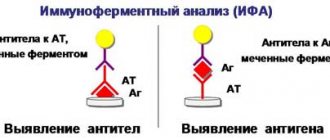In modern diagnostics, there are many advanced methods, laboratory and instrumental, for studying the patient’s biological secretions. Patients are often prescribed a urine test according to Zimnitsky: what it shows and what signs of pathological changes can be identified using this method is a subject of keen interest. The famous Zimnitsky Test is a progressive technique discovered at the beginning of last year by an outstanding representative of Russian science. It received its eponymous name in honor of its discoverer, the outstanding clinician S.S. Zimnitsky.
What does a urine test according to Zimnitsky show?
Content
The undoubted value of the developed method is the ability to determine the state of a complex biological complex using fairly simple manipulations. The brief essence of a specific study is to determine the density and specific gravity of biological secretions produced by a paired organ. Deviation from the conventional norm is a reliable reason to talk about disturbances in concentration and the presence of pathological changes in one of the main functions of the kidneys.
A common misconception among non-medical people is that the kidneys only produce urine. In fact, they filter the blood, regulating its volume, synthesize red blood cells, and during the filtration process they also reabsorb substances that can be useful to the body.
The Zimnitsky test is a clear indicator:
- • ill health of a paired organ or cardiovascular system;
- • disruption of one of the main functions of the kidneys – hormonal synthesis%
- • removal (excretion) of harmful substances, maintaining the water-salt balance of an open system and excretion (the latter precisely includes the ability to independently select the necessary components, reabsorption and direct excretion).
Obtaining a certain result according to Zimnitsky allows one to suspect diseases of a paired organ or heart disease. The density and specific gravity of biological fluid can tell a lot in a general blood test, but this simple and accessible study, carried out without complex equipment, gives an idea of how much consumed fluid is excreted from the body, how much of the total excretion is produced per day, how quickly in In the patient’s body, the fluid consumed and urine are released (rate of formation).
Don’t be shy, ask our consultants questions, right here on the website. We will definitely answer. Leave commentsGo
In pregnant women
During the period of gestation, the body is rebuilt to meet existing needs: the load on the heart and circulatory system increases, the growth of the uterus can provoke gestational pyelonephritis (due to pressure on the paired organ). Violation of kidney function can lead to a failure of natural homeostasis, a failure of hormonal levels can lead to intrauterine pathologies, and disorders of the excretory function can lead to the accumulation of harmful substances in the body - waste and toxins, and this negatively affects the growth and development of the child. Collecting a urine test according to Zimnitsky is a mandatory procedure during pregnancy. allowing you to orient yourself in the general condition of the expectant mother and her child and prescribe further research. If initial assumptions are confirmed, treatment is prescribed to exclude the possible development of a negative scenario.
Among women
Zimnitsky’s technique allows you to form an objective opinion about the possible causes of pathological signs. For women, it has diagnostic value for diabetes mellitus, hypertension, renal or heart failure, hyper- and hypotension. The presence of the disease can be suspected by accompanying symptoms - fainting and dizziness, imbalance between the amount of fluid drunk and excreted, constant thirst and profuse sweating. The main symptom is difficulty urinating. Abnormally frequent, with painful urges, or rare and short-lived swelling - all this may be the reason for prescribing a test for more specific confirmation of the presence of pathology.
In men
The purpose of the analysis is based on the same characteristics as in the second half of humanity. However, more common reasons for prescribing a diagnostic method are suspicions of an inflammatory process in the genitourinary organs, kidney disease (glomerulo- or pyelonephritis, pathological condition of the heart muscle or suspicion of diabetes mellitus. Based on the ratio between the liquid drunk and urine excreted, the presence of night diuresis, swelling can be suspected various variations of diabetes, or kidney pathologies.Although sometimes the cause of the failure is incorrect nutrition, then this is an easily solvable problem.
The most common reason for referral is pain in the lumbar region and the presence of protein in a general urine test. Typically, the Zimnitsky test is carried out in a hospital, however, if all the intricacies of the analysis are explained to the patient, the biomaterial can be collected at home.
In infants
The purpose of the analysis is the early diagnosis of hidden inflammatory processes in the organs of the genitourinary system, kidney pathology, hypertension and diabetes. since the density of the fluid secreted by a child varies, the maximum and minimum, the number of urinations per day and the collected volume are taken into account.
Children
A child of different age periods has variable reference values characteristic of a given period. Deviation from the norm allows you to make certain assumptions, which are then confirmed or refuted using more informative methods. To calculate the norm, a special formula is used that can be used, and a table with relative values.
Teenagers
It is used for general reasons, approximately the same as in adults - hormonal imbalance (as a consequence of pathology - diabetes), teenage hypertension or kidney disease. An indication of the need for this may be heavy nocturnal enuresis or polyuria with awakening, lack of urination after drinking heavily, or the prevalence of nocturnal diuresis over daytime diuresis. Sometimes the basis for suspicion of pathology of the genitourinary system or kidneys is too frequent or too infrequent urination.
Reasons for deviations of indicators from normal values
In case of a significant excess of the volume of urine excreted per day, doctors diagnose a preliminary state of polyuria. This problem can be caused by diabetes mellitus or diabetes insipidus, and also directly indicate the presence of renal failure in various forms.
If the ratio of the volume of urine excreted per day to the volume of fluid drunk is below the norm (in general, the volume of urine excreted per day to the direct value of the fluid drunk normally ranges from 65 to 85%), then this indicates a delay in the excretion of water from the body. This condition provokes swelling, against the background of a wide range of different diseases.
According to modern diagnostic practice, the amount of daytime urine in generally healthy people exceeds the same “nighttime” indicator. This ratio is estimated to be approximately 2/3 for the day and only 1/3 for the night.
The predominant proportion of nocturnal diuresis over daytime may be a sign of disruption of the heart muscle and the formation of prerequisites for the development of renal failure. Equal shares of indicators indicate malfunctions in the concentration function of the kidneys, since the organ reacts poorly to the activity of the body within the framework of a regular change in the circadian rhythms of sleep and wakefulness.
The relative density of biomaterials normally ranges from 1012 to 1025 milligrams per milliliter of urine. It is noteworthy that density indicators in different portions may vary , since during the diagnostic day the kidneys react differently to changes in the activity of the body as a whole. At the same time, indicators of low density urine analysis according to Zimnitsky indicate a violation of the concentration function of the kidneys.
In general, the pathology is called hyposthenuria and can be detected in severe forms of renal failure , the presence of active inflammatory processes in the said organ such as pyelonephritis, diabetes insipidus, or heart failure.
With polyuria, pathologies such as sarcoidosis, multiple myeloma, various forms of hypoaldosteronism, polycystic kidney disease, and distal tubular acidosis are detected. Urine excretion during the day from 250 to 400 milliliters can be caused by uncontrollable vomiting, profuse diarrhea, increased sweating against the background of limited fluid intake. If the problem is also accompanied by swelling, then the pathology is usually associated with impaired renal function or heart failure.
The most severe stage of poor urine output (up to 200 milliliters per day) is a sign of severe extractor dysfunction caused by partial or complete cessation of the bladder or blockage of the urethra.
How to collect a urine test according to Zimnitsky
The collection technique can present certain difficulties for adults and children with a good night's sleep. Throughout the day, starting from 6 am, urination is carried out, every 3 hours - into a separate, hermetically sealed container. Night time also refers to the period for collecting biological fluid, so you will have to set an alarm so as not to miss the deadline for collecting urine.
Preparation for the Zimnitsky test
The day before the test, exclude from the diet food components that cause thirst or can give biological fluid an uncharacteristic color (for example, beets and carrots, salty and spicy foods, irritating seasonings, specific national dishes). Stop taking diuretics, vitamins, contraceptives and antibiotics. Before each urination, wash the external genitalia. It is necessary to prepare a special container for urine tests, one for all 8 periods of fluid collection and a spare one, in case the secretion does not fit into the prepared container (the remainder is poured into an additional container.
The essence of the technique
To know how to collect urine samples according to Zimnitsky, you need to consult with your doctor.
The person empties the bladder every three hours into prepared containers. All Zimnitsky samples are obtained within 24 hours. Having received the biomaterial in full, the laboratory technician will more accurately identify all the indicators according to Zimnitsky.
The laboratory doctor examines them all. He calculates daily diuresis, nighttime urine output, and specific gravity. All these indicators vary depending on the state of human health.
The main task of the test is to find out how well the kidneys cope with concentrating and diluting urine. The method is prescribed if a disease is suspected or as an additional test to a general urine test, the Nechiporenko method.
Daily fee
In this case, the question of how many ml of urine is needed for analysis is not particularly important. For a correct study, all urine is needed, except for the first morning urine, six o’clock, which is drained into the toilet. Only after the patient has urinated at 6 am the next morning, all the collected material is mixed, the volume is determined and 150-200 ml is poured into a clean container. So it serves as the subject of research. Ideally, biological secretions are delivered to the laboratory no later than 2-3 hours after testing. How long urine is stored for analysis is approximately the same as in normal cases, plus a day.
To avoid unpleasant consequences, it is better not to use random containers, even if they are cleanly washed and sterilized using home-grown methods. It is most reliably stored in factory containers, sterile, with a hermetically sealed lid. Otherwise, microorganisms will begin to multiply, distort color and other indicators. But it is precisely for their determination that urine is collected throughout the day - from 9 am one day and six am the next.
Rules for collecting urine for analysis
To obtain correct data for the sample, it is necessary to properly prepare for the test and adhere to the Zimnitsky urine collection technique. If the rules for collecting urine are violated, the laboratory technician will give incorrect results, the doctor will not be able to make a diagnosis or will identify the wrong disease.
Preparing for analysis
To prepare a patient for test collection, the following rules must be applied:
- 2-3 days before the study, all medications, especially diuretics, are discontinued (if this cannot be done for health reasons, the patient warns the doctor about the medications being used);
- on the day of the test, eat and drink the same amount of food and water as on other days;
- Women should not be tested when menstruating;
- during urination, women need to cover the vagina with a cotton swab;
- Before each urination, toilet the external genitalia.
A special diet is not required for the analysis; the composition of the products does not affect the testing.
Daily urine collection
The daily urine collection algorithm begins at 9 a.m., then the patient must urinate inside the container at 12 p.m., then at 3 p.m. The last urination should be performed at 6 am the next day.
If a person empties his bladder at a time other than the required collection time, this urine is not placed inside the container. If there is no urine at the right time, the jar is left empty for the nurse, and the next urination is carried out only after three hours. A total of eight containers filled with liquid come out.
The collection of biomaterial is carried out in a hospital setting, since the nurse must count the excreted urine and record the data. The volume of liquid drunk and foods containing a lot of water (fruits, vegetables) are taken into account. After completing the collection of material, all containers are taken to the laboratory assistant for research.
Urine storage rules
To ensure the reliability of the results, urine is stored according to certain rules.
- Portions of urine are collected inside sterile containers. If a regular jar is used, the results may be unreliable, since there are foreign microorganisms and their metabolic products that will change the result of the study.
- After collecting urine, it should be immediately delivered to the laboratory assistant. This way the analyzes will be the most reliable. If the test is carried out at home, the containers are placed in the refrigerator after each bladder emptying.
- Placing biomaterial in the freezer is prohibited.
Urine analysis according to Zimnitsky: interpretation
The deceptive impression of the simplicity of the diagnostic method does not mean that there are no professional subtleties in how to decipher a urine test based on the density and specific gravity of the excreted biological fluid. Excessive output (polyuria) is a common symptom of complex diseases, as is insufficient urination (oliguria). The variability in the interpretation of hypo- or hypersthenuria (low or high urine density) also extends to a whole range of pathologies, but even if the specific gravity is normal, for a pregnant woman this is not always the only indicator of the absence of the disease. You need to focus on the others - the frequency of night and daytime diuresis, the balance between consumed and excreted fluid, color, daily volume, etc.
Therefore, for those who are interested in what a urine test according to Zimnitsky is, what it shows and who are trying to decipher the data obtained on their own, so many questions arise. But this is not a way to make a diagnosis, but only a means of confirming certain suspicions of the doctor.
When is the Zimnitsky test prescribed and why?
This type of testing is used as an auxiliary means of studying urine in the following cases:
- If renal failure is suspected.
- If diabetes insipidus is suspected.
- The history contains information about inflammatory phenomena in the kidneys/glomeruli, which are chronic in nature - for example, pyelonephritis or glomerulonephritis.
- The patient complains of a constant increase in blood pressure.
Norm and deviations in urine tests according to Nechiporenko
The Zimnitsky test helps to study the concentration level of substances that are in biological fluid.
This indicator is determined by identifying the relative density of urine , the main components of which are nitrogenous compounds. In the presence of protein, glucose, or other organic substances, there are malfunctions in the urinary system.
With this type of urine testing, the doctor takes into account the amount of fluid during the day and night. Impaired diuresis levels can be a sign of various pathologies.












